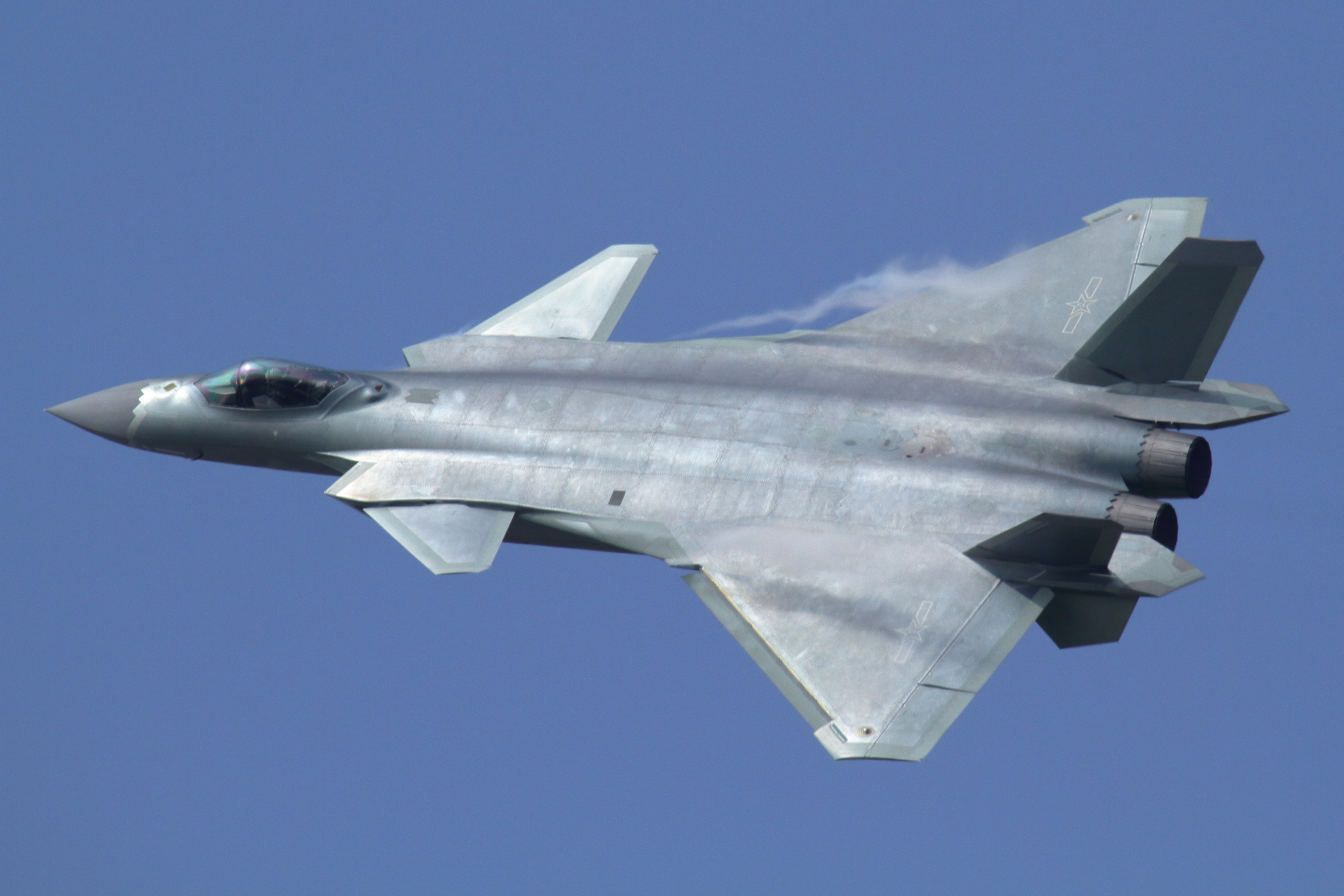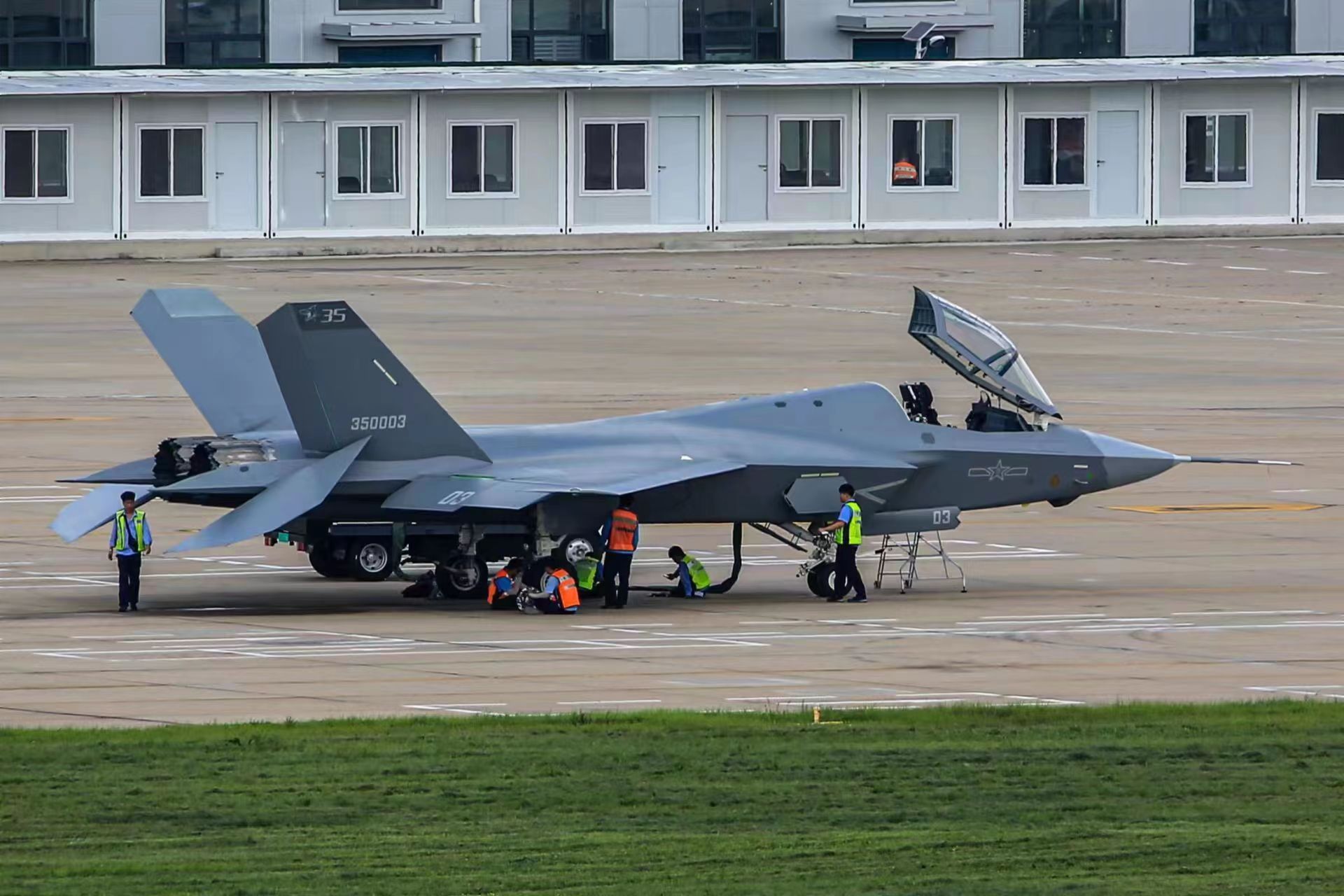China's “Great Leap Forward” in Combat Aviation: Has the Era of Sixth-Generation Fighters Arrived?
China stuns with the flight of two sixth-generation fighter prototypes. Did it get ahead of the competition?
Last December 26, coinciding with a new anniversary of Mao Zedong's birth, China surprised the world by putting into flight and allowing the release of images of two sixth-generation fighter prototypes. This achievement is all the more impressive considering that its second fifth-generation fighter, the J-35, has yet to enter service, and that the People's Liberation Army Air Force (PLAAF) maintains a significant number of third-generation fighters in its inventory, although not in its front-line units, awaiting modernization.
China's rapid progress in the development of its aerospace technology is remarkable, and with this latest demonstration, it has apparently surpassed its Western rivals by becoming the first power to fly not one, but two prototype fighters with sixth-generation characteristics.
Evolution of Chinese Military Aviation
In order to better visualize China's ability to evolve its military aviation “by leaps and bounds”, let's take a brief look at the development of its stealth fighter aircraft.
J-20 Mighty Dragon
The J-20 Mighty Dragon, developed by Chengdu Aircraft Corporation (CAC), is China's first fifth-generation fighter, designed to achieve air superiority thanks to its advanced electronics and stealth capability. Its development began in the 1990s and its maiden flight occurred in January 2011. In December 2016, the J-20 entered service with the PLAAF, ahead of Western analysts' expectations. Since its introduction, it has been constantly upgraded, including improvements in aerodynamics, avionics, coating, as well as the replacement of the Russian AL-31F engines that equipped the early-block J-20s with domestic WS-10Cs.

In 2019, the J-20 entered mass production, cementing itself as the spearhead of Chinese combat aviation. However, the Mighty Dragon is a design that continues to evolve rapidly. In 2021, the first prototype of the J-20S emerged, a two-seat variant, likely created for electronic warfare missions or as a mini airborne command and control post. In December 2022, the J-20A prototype began runway testing, with significant aerodynamic and electronic improvements, highlighted primarily by the integration of modern WS-15 engines, which would give the J-20 supercruise capability.
FC-31-J-31-J-35-J-35A Gyrfalcon
The second line of Chinese fifth-generation fighters began with the FC-31 project in the mid-2000s, as an initiative of Shenyang Aircraft Corporation (SAC) to develop a medium-sized fifth-generation fighter with export potential. Powered by Russian RD-33 engines (those of the MiG-29), FC-31 prototype #31001 made its first test flight in 2012, but the PLAAF showed no interest in the aircraft, preferring to concentrate its resources on the production of the J-20.
Who actually showed interest was the People's Liberation Army Navy (PLAN), which requested a complete redesign of the aircraft for carrier-borne operation, giving birth to the J-35, whose first flight took place at the end of October 2021.
Powered by Chinese WS-21 engines, the J-35 features a cockpit design undeniably similar to that of the F-35. It also has an IRST or EOTS-type optronics system under its nose and a boarding ladder similar to those of the U.S. fighter.

The J-35 has an internal weapons bay with an estimated payload capacity of 2,268 kg, with six hardpoints for air-to-air missiles or air-to-surface weaponry. When the mission does not demand the highest degree of stealth, this weapons capacity can be augmented by another six hardpoints on the wings.
Recognizing how interesting the Navy's J-35 had become, the PLAAF asked Shenyang Corporation to develop for them a variant without an arresting hook and wing folding system. As a result, the fuselage of the J-35A should be lighter than that of its naval sibling, which would improve its performance.
The first J-35A prototype made its maiden flight on September 26, 2023 and was officially unveiled to the public at the 2024 Zhuhai Air Show. The aircraft is rumored to enter limited service at the PLAAF in 2025, ahead of the naval version that spawned it.
Generational leap
The progress of Chinese technology in military aviation is dizzying. A country that began its aerospace career several decades behind Russia, the U.S. and Europe, managed to develop and put into operational service its first fifth-generation fighter aircraft after approximately 20 years. The development of its second line of stealth fighters for the PLAAF and PLAN was even faster, despite an initial period in which the FC-31 found no takers.
In short, China, which currently operates only one stealth fighter model in service, with more than 200 units produced, is on the verge of incorporating its second line of fifth-generation fighters. But, moreover, it seems to have managed to outdo its Western counterparts by flying two prototypes of a new generation of low radar signature fighter aircraft, which appear to be sixth-generation fighters.
Two complementary fighter jet models
The sixth-generation fighters on display Dec. 26 do not appear to be competing designs for a production contract, but two models intended to complement each other within the Chinese Armed Forces' structure.
The powerful three-engine fighter designed by the Chengdu company, unofficially dubbed the J-36, is perhaps the more cutting-edge model of the two. Observation of the photographic material allows speculation that the J-36 has 3 weapons bays, including a large central one, which would allow it to carry a considerable number of internal munitions, including hypersonic missiles and very long-range air-to-air missiles such as the PL-17.
It appears to feature a main radar configuration similar to that chosen for the Russian Su-57, with one front and two side antennas for wide coverage. In addition, above these side antennas, there are windows that could house advanced optronic equipment such as IRST or EOTS, and potentially even laser weaponry, a capability under study for sixth-generation fighters. Finally, the aircraft appears to be covered by a sort of “flexible skin”, particularly in the area of the wing control surfaces.
This aircraft appears designed to be the heavyweight fighter of the duo, capable of carrying a significant armament load at long distances and high sustained speeds. The J-36's anticipated capabilities would allow the PLAAF to significantly extend its range for defensive patrol operations, as well as execute offensive air-to-air and air-to-surface operations with operational or strategic impact, directly threatening the enemy's rear and logistics. Likely J-36 targets include warships, air bases, communication systems and radars in the Pacific island chains, as well as intelligence, command and control, and military transport planes, which would no longer be safe in the rear under the protection of escort fighters.
Ultimately, the J-36 could act as a force multiplier within the Chinese military structure, allowing the PLAAF to maintain a deterrent presence at long distances from its operational bases with a relatively low number of jets, complicating the deployment of antagonistic forces.
On the other hand, Shenyang Aircraft Corporation's twin-engine lambda-wing fighter (tentatively dubbed the J-50), appears to follow a different philosophy. Designed to maintain a high level of stealth from all angles, this model prioritizes agility over kinematic performance, surely offering lower production and maintenance costs. It is likely destined to be produced in greater numbers than the J-36, and there is speculation that the Chinese Navy may develop a naval version of this model for embarked operations.
Has the sixth generation of fighters arrived?
The evolution of Chinese stealth fighters, from the J-20 to the presumed sixth-generation models such as the J-36 and J-50, is evidence of China's determined efforts to close the technological gap with the United States and, if possible, to overcome it. These advances are beginning to make themselves tangibly felt. Of course, there will be those who question whether the models unveiled in December truly qualify as sixth-generation fighters. But what exactly defines a fighter aircraft in this category? If the characteristics that determine a fifth-generation fighter have changed over time, it is understandable that the debate over the specifications of the next generation is even more complex. Just as the United States set the standard for fifth-generation fighters with the introduction of the F-22 -a standard that was later adjusted to include the F-35-, if China succeeds in being the first to field a new generation of fighters in active service, it will be they who define the global standard for sixth-generation fighters. After all, whoever defines the rules of the game, exercises its control.

/https://aviacionlinecdn.eleco.com.ar/media/2025/01/sexta_generacion_j_36_china.jpg)
Para comentar, debés estar registradoPor favor, iniciá sesión